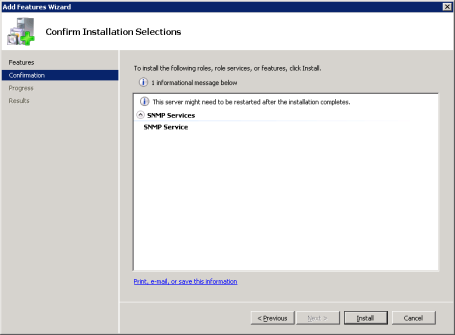Install Cacti Di Windows 7

Install Cacti on CentOS 7. Cacti is an open source web-based network monitoring tool designed as the front end application for the RRDtool (Round-Robin database tool. Throughout this section, cacti_web_root is referenced. It's intended to be substituted with the real Cacti web server path of your environment. In this posting you will be learning how to install Cacti 0. Not valid in Windows 95). Error_log = syslog Step 7. Urban-Software.de offer commercial Cacti. How to install cacti on windows 7. [TUGAS MJK] Monitoring Windows 7 dengan menggunakan Cacti di Ubuntu. Video di atas merupakan tugas SNMP.
Install Cacti in RHEL / CentOS / Fedora In this how-to we are going to show you how to install and setup complete network monitoring application called Cacti using Net-SNMP tool on RHEL 7.x/6.x/5.x, CentOS 7.x/6.x/5.x and Fedora 24-12 systems using YUM and (Fedora 23 onwards) package manager tool. Cacti Required Packages The Cacti required following packages to be installed on your Linux operating systems like RHEL / CentOS / Fedora.

• Apache: A Web server to display network graphs created by PHP and RRDTool. • MySQL: A Database server to store cacti information. • PHP: A script module to create graphs using RRDTool. Download Wondershare Powersuite Golden 2012 Cracked here. • PHP-SNMP: A PHP extension for SNMP to access data.
• NET-SNMP: A SNMP ( Simple Network Management Protocol) is used to manage network. • RRDTool: A database tool to manage and retrieve time series data like CPU load, Network Bandwidth etc. Installing Cacti Required Packages on RHEL / CentOS / Fedora First, we need to install following dependency packages one-by-one using YUM package manager tool.
Install Apache # yum install httpd httpd-devel --------- On Fedora 22+ releases --------- # dnf install httpd httpd-devel. MySQL Installation MariaDB is a community-developed fork of the MySQL database project, and provides a replacement for MySQL. Previously the official supported database was MySQl under RHEL/CentOS 6.x/5.x and Fedora. Recently, RedHat makes a new transaction from MySQl to MariaDB, as MariaDB is the default implementation of MySQL in RHEL/CentOS 7.x and Fedora 19 onwards.